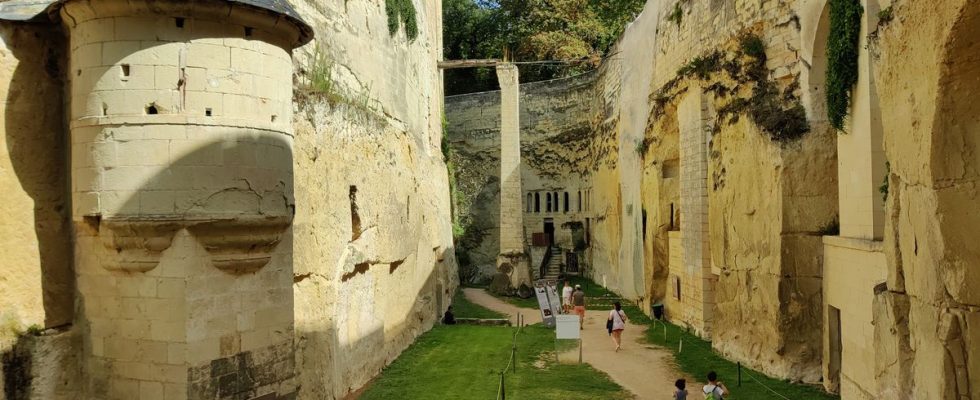“It’s a superb discovery, truly original. And the visit away from the sun does you a lot of good. It makes you want to take your time,” appreciates Danielle. Summer continues in France and tourists still appreciate the cool weather. With their thick stone walls, the castles of the Loire fulfill the mission perfectly. But that of Brézé, in Bellevigne-les-châteaux, near Saumur (Maine-et-Loire), pushes the cursor much further. Because it is not only a Renaissance and Gothic style castle that is offered to visitors but, also, a second fortress invisible from the outside because it is entirely dug under the rock.
“This is the particularity of Brézé, we are truly talking about a castle under the castle. There are at least 4 kilometers of underground development, making it a unique site in Europe in terms of its size. There are galleries going in all directions. Some have been collapsed or abandoned. Archaeologists therefore believe that the underground network is much larger still,” explains Damien Pavillon, guide-lecturer of the place.
“The work was colossal”
This indeed seems difficult to imagine on the spot but, for almost five centuries, there was no only one castle, underground. “Its official existence is attested in 1063 but its construction was probably before the year 1000,” says Damien Pavillon. The lords took advantage of the tuffeau basement, a malleable stone, to build a fortress in order to effectively protect themselves from invasions, epidemics, and even bad weather. The work was colossal, obviously not all of this was done in one day. »
About ten meters below the ground, rooms, cooking areas, grain silos and even a stable were dug. This medieval bunker, dotted with narrow tunnels and firing points, was designed to be as impregnable as possible. A well was drilled to provide light and ventilation. As for the temperature, it is around 12°C, whatever the season. “It is estimated that the main spaces were suitable for the life of around thirty people made up of the lord, his family, a few servants and a close guard. Storage capacities allowed them to remain underground for approximately six months. They lived the rest of the time in wooden buildings outside. »
The site took on a new dimension in the 15th century with the construction, under the leadership of the Maillé-Brézé family, of a fortified aerial castle and the establishment of a garrison. Impressive defensive pits are dug there. Today they remain the deepest dry moats in Europe, reaching a depth of up to 18 meters. New outbuildings were built into the rock from these moats, thus expanding the initial troglodyte network. Kitchen, ovens, bakery, ice house, press and even a silkworm farm, a room used for breeding silkworms, were created and connected to new galleries, sometimes spectacular, like the Saint-Vincent gallery, which is large enough to allow pass carts.

“The breeding of evening worms operated until the 19th century, the bakeries until the 20th century and the press until 1976. Moreover, it was the wine-growing activity that prevailed over the rest in as we get closer to contemporary times,” explains Damien Pavillon. “All this life hidden from outside eyes for centuries is fascinating. It’s almost a shame that it’s no longer used today,” comments Jérôme, a Belgian tourist.
A gruyere under close surveillance
Owned by the Colbert family since 1959, a direct descendant of the famous minister of Louis Important restoration work are carried out there permanently, like those concerning the counterscarps currently. The building is also under regular surveillance so that it is not weakened by the tufa cheese on which it rests.

“These projects are very expensive. To my knowledge, there are no plans, for the moment, for archaeological research aimed at uncovering new underground galleries,” indicates Damien Pavillon.
Classified as a historic monument, the Château de Brézé receives an average of 110,000 visitors per year, nearly 40% of whom are foreigners. It takes advantage of its unique basement to offer a “special atmosphere” during certain annual highlights, such as Halloween or the Easter egg hunt, directly from the tunnels.

